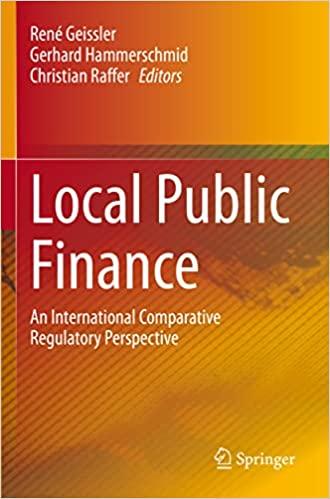Question
Homework Question 1) Currently a call contract with an exercise price of $10 on a share of List Aerospaces common stock is selling for (that
Homework Question 1) Currently a call contract with an exercise price of $10 on a share of List Aerospaces common stock is selling for (that is, its premium is) $2. What would the profit or loss graph (similar to that in Figure 20.5 See PowerPoint) look like for this option? In drawing this graph, assume that the option is being evaluated on its expiration date. What are the maximum profits, maximum losses, and the break-even point?
How would this graph change if the exercise price was $12 and the price (or premium) of the option was $4?
Problem Example for Students:
Draw a profit or loss graph (similar to that in Figure 20.7) for a call contract with an exercise price of $50 for which a $5 premium is paid. You may assume the option is being evaluated on its expiration date. Identify the break-even point, maximum profits, and maximum losses.
Now draw the profit or loss graph, assuming an exercise price of $55 and a $6 premium
Problem Solution:
A long call position is bullishit does better when the stock price at expiration is higher. (Note that we know this is a long position, since we are paying the premium.) With a long option position, the most that the buyer can lose is the premium: if the stock price at expiration leaves the option out-of-the-money, the buyer will walk away (let the option expire worthless), receiving no terminal cash flow, and therefore losing her entire premium. However, as the stock price at expiration moves beyond the exercise price, the option expires in-the-money, and the buyer will exercise it. For every dollar that the stock is above the exercise price, the buyer receives a dollar when she exercises; that is, her payoff at expiration is (stock price at date T - exercise price). If her payoff at date T exceeds her premium, she ends up profiting from her position. Since there is no upper limit to the possible stock price, there is no upper limit to this potential profit.
The first diagram below shows the profit to a long call position, assuming an exercise price (X) of $50 and a call premium (C) of $5. As long as the stock price at date T (ST, shown on the horizontal axis) is greater than the exercise price of $50, the option will be exercised, and the buyer receives a payoff of (ST - X). Note that, as ST increases without limit, so does this payoff. However, the profit is lower than the terminal payoff, since the option buyer had to pay the initial premium of $5. She therefore breaks even when ST = $55 = X = C. At stock prices below X, she lets the option expire worthless, losing the premium. We can see this outcome on the graph as the horizontal line from the y axis to ST = $50 (X ), at a height of -$5 (-C ).
The graph below shows the revised situation: a call premium of $6 (higher) and an exercise price of $55 (also higher). The shape of the profit diagram is the samefor example, it still shows unlimited upside potentialbut its intercepts have changed. Now, not exercising means that the buyers suffers a $6 loss; the loss is higher since the premium was higher. This higher premium alone would shift the break-even point to the right (bad news for the buyer). However, this shift is exacerbated by the higher exercise pricenow the option wont be exercised unless ST > $55. The new break-even point is therefore ($55 + $6) = $61.
The graph below summarizes the differences between the two scenarios. The call with the higher X and higher C (the gray curve) has a much less attractive profit diagram than does the first option: the lower X means the first option expires in-the-money at a lower ST, helping the buyer start recouping her investment sooner, and the lower initial cost means that there is less to recoup in any case.
Provide Your Answer below: (Show your work)
Step by Step Solution
There are 3 Steps involved in it
Step: 1

Get Instant Access to Expert-Tailored Solutions
See step-by-step solutions with expert insights and AI powered tools for academic success
Step: 2

Step: 3

Ace Your Homework with AI
Get the answers you need in no time with our AI-driven, step-by-step assistance
Get Started


